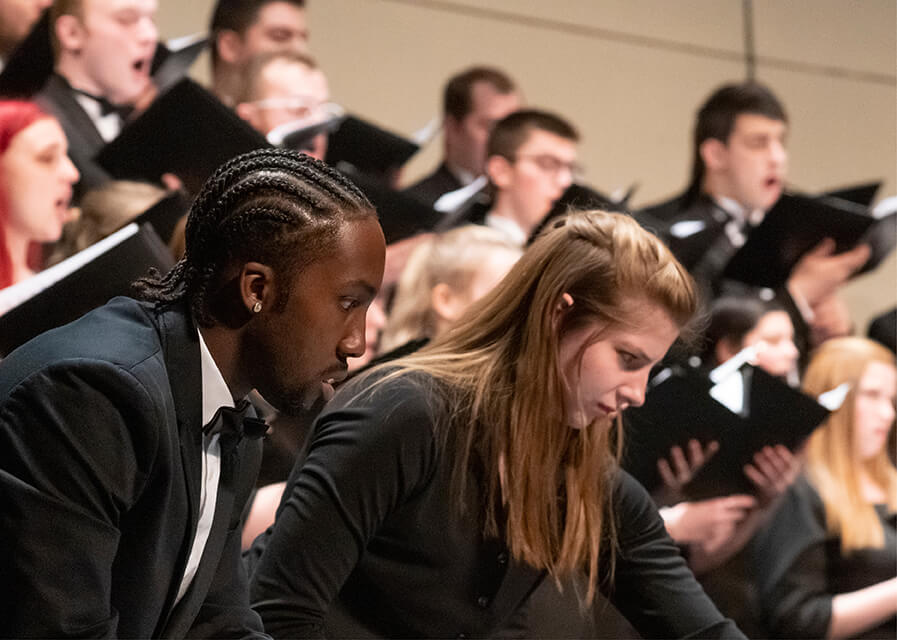

Music scholarships are available for any incoming first-year student regardless of major. Whether you are pursuing a major or minor or you simply enjoy music, you are eligible for a music scholarship.
Scholarships are available for voice, string, brass, woodwind, percussion and keyboard musicians. They range in amount and they’re renewable every year that you are studying at SNC.
In-person auditions will be held on Nov. 16, 2024, and Jan. 25, 2025, for incoming students who plan to attend SNC beginning in the 2025-26 academic year. Please register by Friday, Nov. 1, for the November audition and by Friday, Jan. 10, for the January audition.
The priority date for video submissions is Dec. 1, 2024, for incoming students who plan to attend SNC beginning in the 2025-26 academic year. Videos will be accepted until Jan. 25, 2025.
Please contact Jenny Olson in visual and performing arts by email (jenny.olson@snc.edu) for more information.
2025-26 academic year music auditions
In-person audition: Nov. 16, 2024
In-person audition: Jan. 25, 2025
Virtual video audition
No, you don’t. However, you will need to apply to the college before you can audition. Once you audition, you’ll need to be admitted to the college to be considered for a music scholarship.
You must be a full-time student at St. Norbert College, participating in a major ensemble seven out of your eight semesters, performing on the instrument or voice scholarship you were awarded. If you’re planning on going into teacher education, you should save your “free” semester for the semester you will be student-teaching.
Come and perform two selections that will best showcase your skills. You are encouraged to present repertoire that will demonstrate both lyrical and technical musicality.
If you are auditioning by video, please introduce yourself by telling us your name, what school you are from, the name of your audition pieces and the composer for each piece. We have provided additional audition resources and tips under the “How do I create a great audition video?” section.
Quick tips to help you feel confident
Yes, please consider the following before you decide:
Scholarships range in amount for the year and they’re renewable, subject to review, for three additional years. St. Norbert music faculty members will listen to your audition and determine scholarship award amounts based on your technical skills, your musicality and your potential as a performer.
Scholarships will be awarded until all of the scholarship funds have been allocated. In the case of closely ranked auditions, music majors and minors may receive some preference over non-majors.